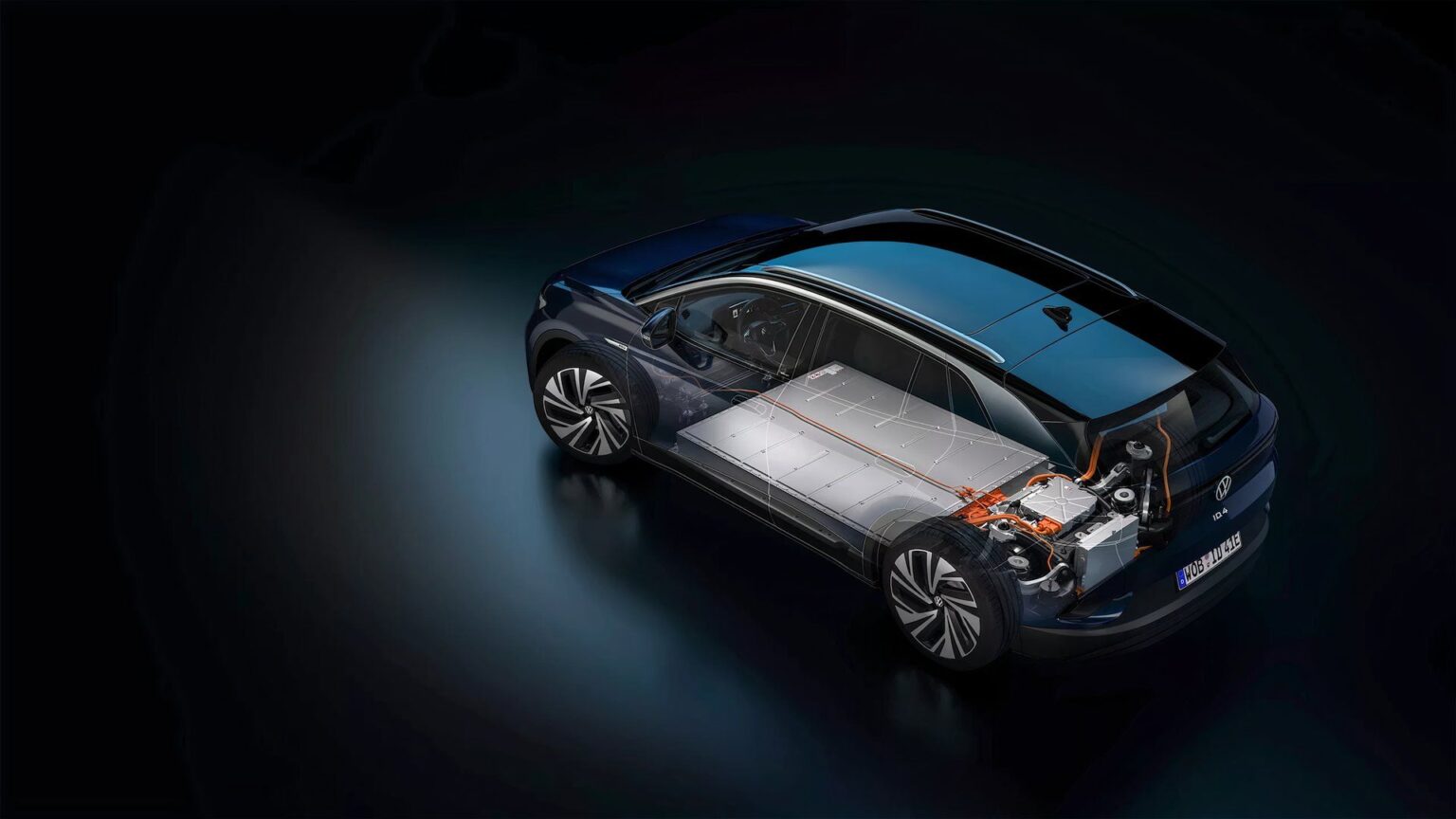At their recent annual media conference, Volkswagen Group officials showcased a new kind of battery setup. Mind you, it’s not a new battery, it’s a new configuration. Why care? Because how batteries are arranged in vehicles has a direct impact on their range, and digging into the weeds of this—and following the lead of the likes of China’s BYD, which got to this idea into production first—could enable the Volkswagen Group, which includes Audi and Porsche, to build cars with exceptional range at far less cost.
The Tech 101
It’s important to understand that Volkswagen’s journey to their new battery arrangement, called Cell to Pack (CTP), has been a long time coming. Last year, VW agreed to terms with the truckmaker, Mahindra, to supply them with the tech, even though at the time Volkswagen didn’t offer a deeper description of what their version of CTP, called unified cells, would actually look like. But this research has been ongoing for at least half a decade.
Chinese automaker BYD already uses CTP, and it’s argued, but not clear, that Tesla does in the Model Y. Mind you, there’s no hard and fast “rule” around what CTP means. But the principles are fairly simple, and there are three reasons to go this route. Reason 1: It offers structural rigidity in a kind of “frameless” design. In essence, CTP enables using the battery pack itself as a frame/floor, eliminating the redundancy of a separate frame. The advantage of doing so is very straightforward: weight.
Saving Money By Applying Different Tech to Different Cars
CTP also eliminates a bunch of redundancy in circuitry. Like BYD already does with the Seal, Volkswagen says they’ll use a wired battery management system to monitor the battery circuitry, which, again, is exactly BYD’s method.
As first reported by Auto Express, VW can use lithium iron phosphate (LFP) batteries, which they already debuted in the ID.3 (in Europe), and is the configuration they’ll use in the ID.1—which may or may not make it to the U.S. Either way, VW—and Audi, and Porsche—customers should care. Because CTP batteries make for a lighter car, and lighter cars are simply more fun. Also, CTP doesn’t have to use LFP, it’s just that LFP happens to be cheaper, and VW has been spending up to a third of the cost of each EV on battery tech. In the race to EV tech that’s more affordable, and cars that are lighter, and enable smaller vehicles that still have decent range, there has to be a breakthrough.
A Bridge Technology
The Holy Grail in battery tech will eventually be solid state technology. Think of what that means this way; more “density” essentially is like packing more gasoline into the same size tank.
While we’re still a few years off from mass-produced solid-state batteries, which will solve this issue, and more, CTP is a bridge to solid state, and will enable the use of cheaper materials (LFP) in the same sized “container.” This is crucial: LFP is a cheaper way to make a battery, but it’s less energy dense than pricier Lithium-ion. The workaround is more cells. In turn, if you’ve also cut structural weight by eliminating most of the container that is used to hold the battery itself, you get a lighter vehicle overall, and that then means you can use a smaller motor, further cutting weight.
TopSpeed’s Take
There’s one fly in the sauce: Tariffs. Volkswagen’s mission is to make multiple worldwide battery plants that are, essentially, identical. The goal is modularity, so that each battery plant is the same, and every EV car platform is essentially identical, too, just stretched or shrunk for what goes on top.
One battery plant in Canada (where VW has its North American battery facility), for example, could turn out batteries for high-demand products in the U.S., namely, Volkswagen, Audi, and Porsche crossovers. Similarly, plants in Germany and Spain could do the same for smaller cars that have higher demand there. But, if VW wanted to bring us the new electric Golf, but were making the bulk of those in Mexico, not in Tennessee, we’d get those cars from there.
But, that’s all been thrown into the blender, what with tariffs against Canada and Mexico, and forthcoming ones against Europe. At the press conference, Volkswagen COO Arno Antlitz said that one reaction by VW will be to make more Golfs in Mexico for export back to Europe, because the EU and Mexico don’t have a trade war. The impact of which could well be—and what most, say, future electric Golf fans need to understand—is that we may never get these cars. Not because there’s no market for them, but because U.S. tariffs would make them impossibly expensive and non-competitive, no matter what technological and price breakthroughs Volkswagen, or other carmakers achieve.
Read the full article here


